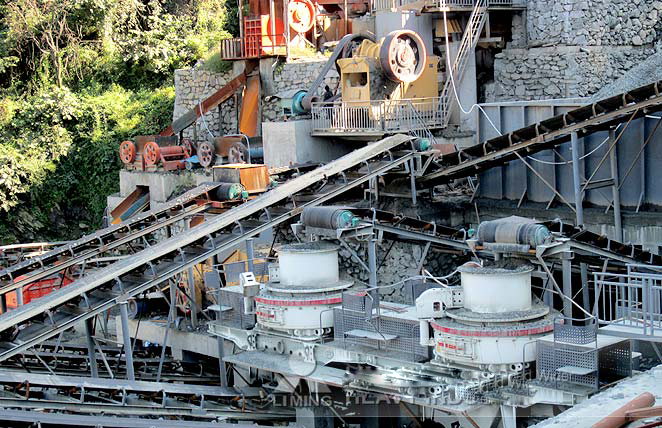A cone crusher is an essential piece of equipment in a quarry, used for secondary or tertiary crushing of hard and abrasive materials like granite, basalt, and limestone. Below are key considerations when selecting a cone crusher for quarry operations:
1. Types of Cone Crushers for Quarries
– Standard (Coarse) Cone Crusher: Best for larger feed sizes and producing a coarse product.
– Short Head (Fine) Cone Crusher: Ideal for finer crushing and producing high-quality aggregates.
– Multi-Cylinder Hydraulic Cone Crusher (HP Series): High efficiency, adjustable settings, and better particle shape.
– Single-Cylinder Hydraulic Cone Crusher: Compact design, suitable for medium-hard materials.
 2. Key Features to Consider
2. Key Features to Consider
– Capacity & Throughput – Match the crusher’s capacity with your quarry’s production needs.
– Feed Size & Discharge Setting – Ensure the crusher can handle the maximum feed size from primary crushing (e.g., jaw crusher).
– Automation & Control Systems – Modern cone crushers come with hydraulic adjustment and remote monitoring (e.g., Metso IC™, Sandvik ASRi).
– Wear Resistance – Look for manganese steel liners or other durable materials.
– Mobility – Track-mounted cone crushers (like Lokotrack or Powerscreen) offer flexibility in moving between sites.
3. Top Brands & Models
| Brand | Popular Models | Key Features |
|——–|—————-|—————-|
| Sandvik | CH430, CH440, CH660 | High efficiency, ASRi automation |
| Metso (Nordberg) | HP300, HP400 | Multi-cylinder hydraulic design |
| Terex Finlay | C-1540, C-1550 | Track-mounted, versatile |
| Powerscreen | 1000 Maxtrak | Compact & mobile |
| McCloskey | C2/C3 Cone Crushers | High throughput |
4. Maintenance Tips for Quarry Use
– Regularly check liner wear and replace when necessary.
– Monitor oil levels and hydraulic pressure.
– Keep the feed material clean to avoid uncrushable objects damaging the machine.
– Us.jpg) roper lubrication systems to extend bearing life.
roper lubrication systems to extend bearing life.
5. Cost Considerations





Leave a Reply